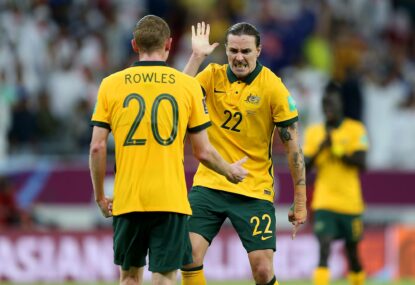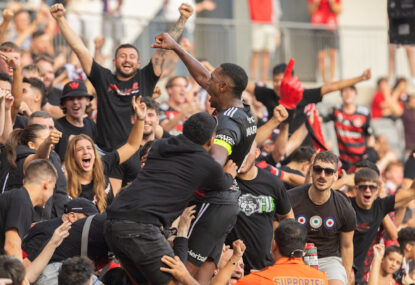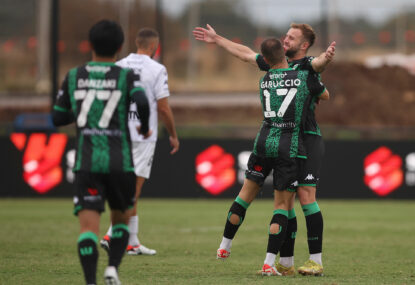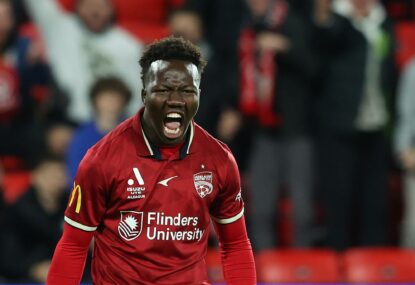The Socceroos enter the 2014 World Cup going through it’s most fruitful period of success in its history.
Since being first-round casualties in 2010, they’ve qualified for a fourth World Cup (third in succession) and made the final of the 2011 Asian Cup, where we narrowly lost to Japan in the final.
Superficially, it looks like a great achievement considering we are yet to approach the 10th anniversary of the rebuilding of football in Australia.
While the past four years looks good on paper, the reality of that period was far uglier.
After initial optimism, the World Cup qualifying campaign was nearly botched and took until the final 10 minutes of the final match to be secured.
Former coach Holger Osieck froze on developing new talent, with successive Socceroos squads dangerously overloaded with players picked on reputation rather than form.
As a result, disjointed and inconsistent performances became the norm as the coaching staff failed to create a side that could blend youth and experience.
The nadir of this period came towards the end of last year with successive 6-0 thrashings at the hands of France and Brazil, which saw Osieck sacked and Ange Postecoglou given the reins for the long term.
With this in mind, the Socceroos enter the 2014 World Cup as an international airport transition lounge.
We will see the final curtain call of some of our footballing greats as they depart for retirement while new faces enter the stage hoping to put on a performance that will inspire confidence in the new generation.
So how as fans do we approach this World Cup?
In 2006, we approached the tournament with a nothing-to-lose attitude, while 2010 was approached with a mixture of cautious optimism and trepidation.
2014 will be painful however, as a rebuilding squad will struggle to make an impact on the tournament.
Looking at the five matches matches Postecoglou has taken charge of, there is very little about each performance that could be construed as consistent. Injuries and the need to experiment rendered the matches as nothing more than glorified training sessions.
If the past few matches have taught us anything, the game plan will revolve around a strong defence.
Apart from the Ben Halloran mishap, which cost Australia a point against Croatia, the defence looked solid if unspectacular with the back four keeping a reasonably talented Croat side at bay for most of the match.
Ange showed us that the Socceroos are building their game plan around a cautious defensive approach that seeks to counter the high fluidity passing game of their opponents.
Matthew Spiranovic looks like he will be the mainstay centre half for the Socceroos and will probably partner the injured Curtis Good in the future while Alex Wilkinson and Jason Davidson are serviceable defenders.
Meanwhile, the expertise of captain Mile Jedinak in the middle helped stabilise and direct the midfield when they didn’t have the ball and his excellent leadership can only serve Australia well going forward.
So defence is tentatively sorted, what about our attacking options you ask? My answer to that is simple, don’t expect miracles.
Australia at its best would struggle to score goals against the might of Spain, the Netherlands and Chile so the absence of Josh Kennedy and Tom Rogic makes the challenge of attacking even more difficult.
The sad news is that the back-up options are unlikely to fill fans with confidence.
Mathew Leckie, Dario Vidosic and Tommy Oar were given a chance to impress and they failed to shine against Croatia.
Yes, the game plan may be based around a defensive mindset, but the Socceroos still needed to see vitality from the above trio considering their attacking reputations and the fact Postecoglou is likely to play just one upfront.
The trio failed to inspire, putting in a disjointed performance that was lacking class.
The damning part of this is that Australia’s best ball-player is still the 34-year-old, unfit Marco Bresciano, with no-one else looking close to replacing his quality.
A lack of Kennedy and Rogic through the middle will see Tim Cahill playing most of the tournament as a lone forward.
His aerial prowess and strength is still first class but he will need to put in a mammoth effort on his own up forward in a position that I think fails to bring out his best.
So enjoy the World Cup and don’t feel too despondent about Australia. Predictions of annihilations are off the mark, with Ange’s game plan likely to grind out some honourable performances.
Yet despite that rosy outlook, don’t expect to be jumping out of your chair to celebrate an Australian goal too often, let alone a win.
Twitter: johnhunt1992




































































































